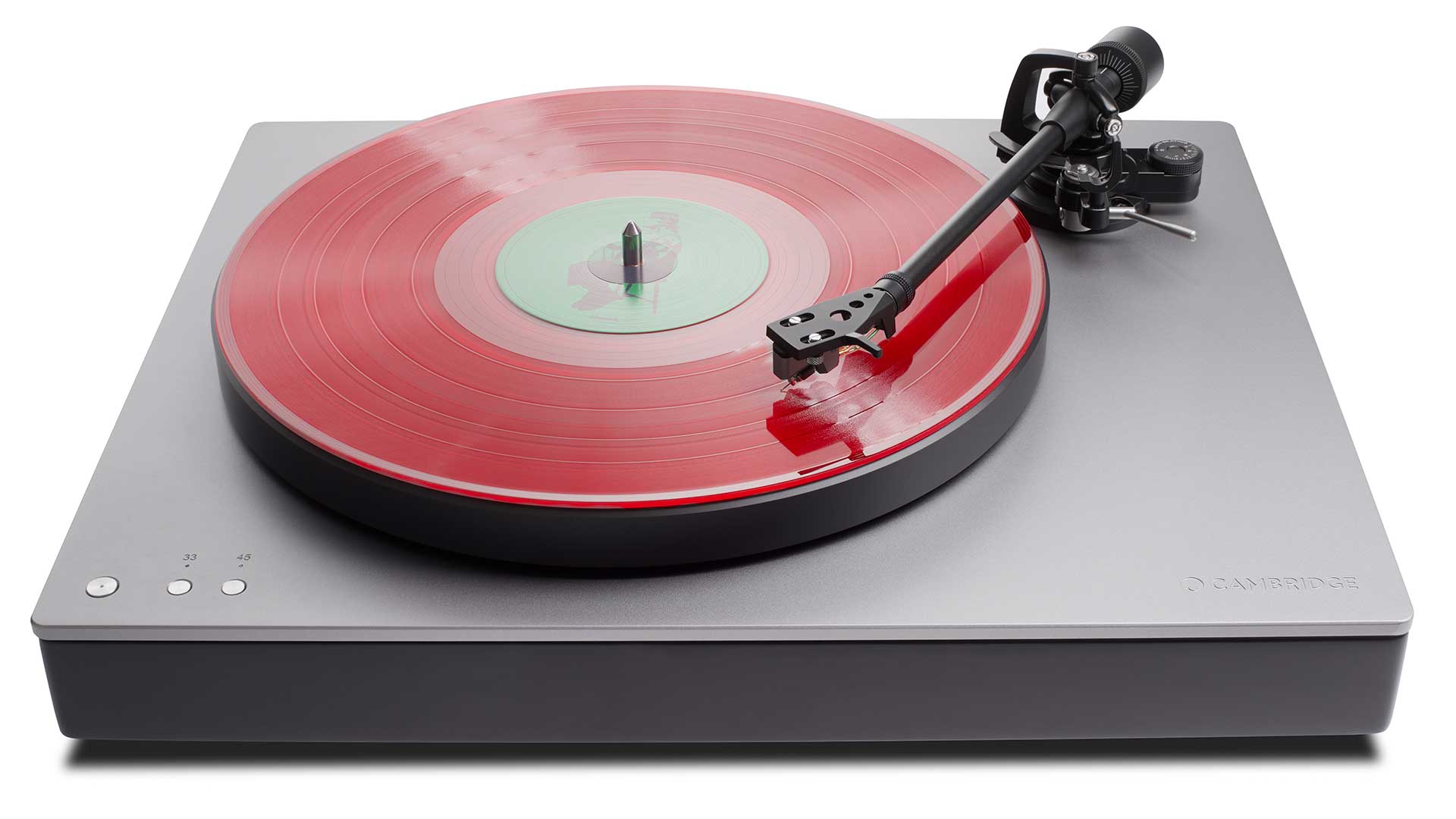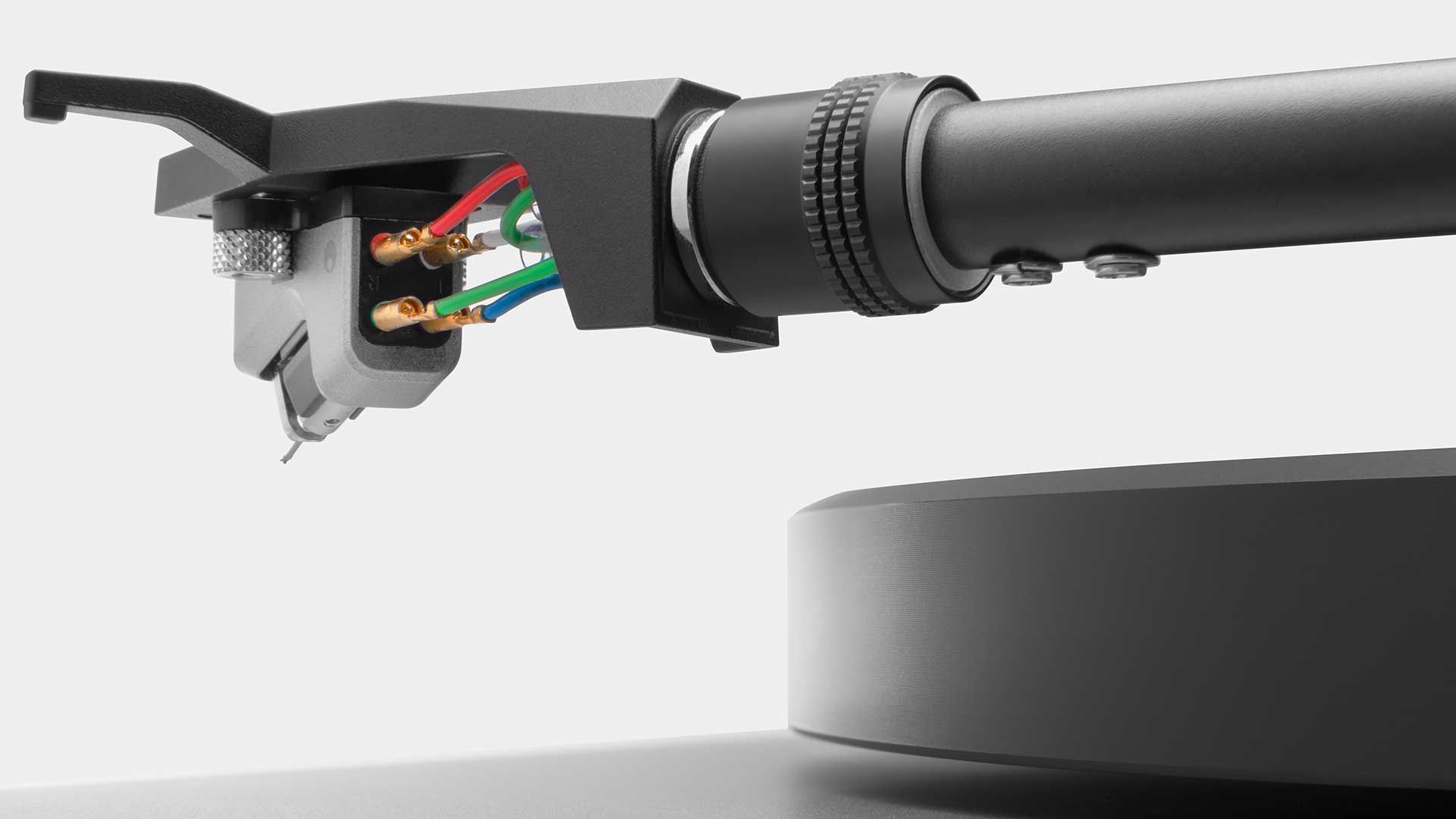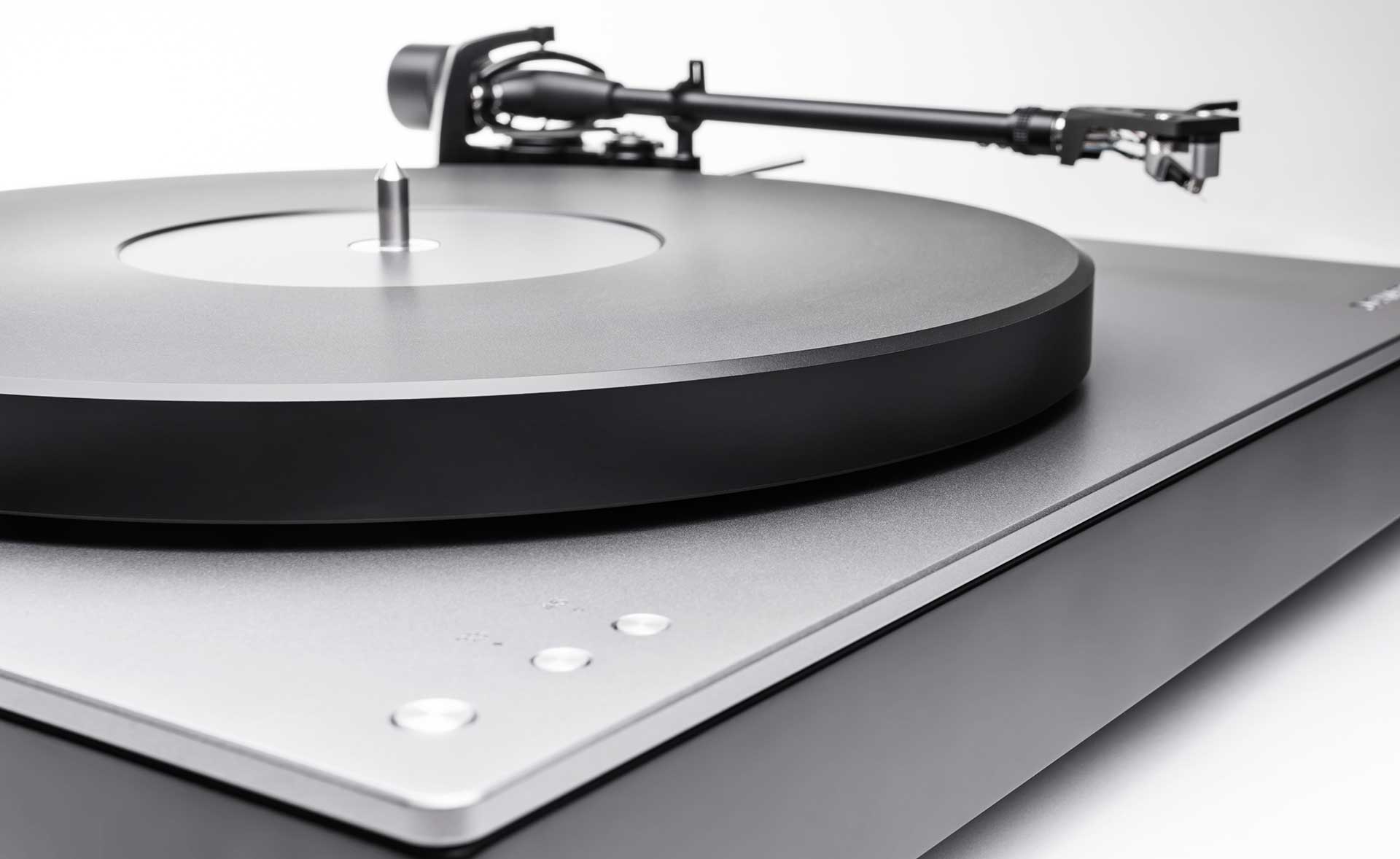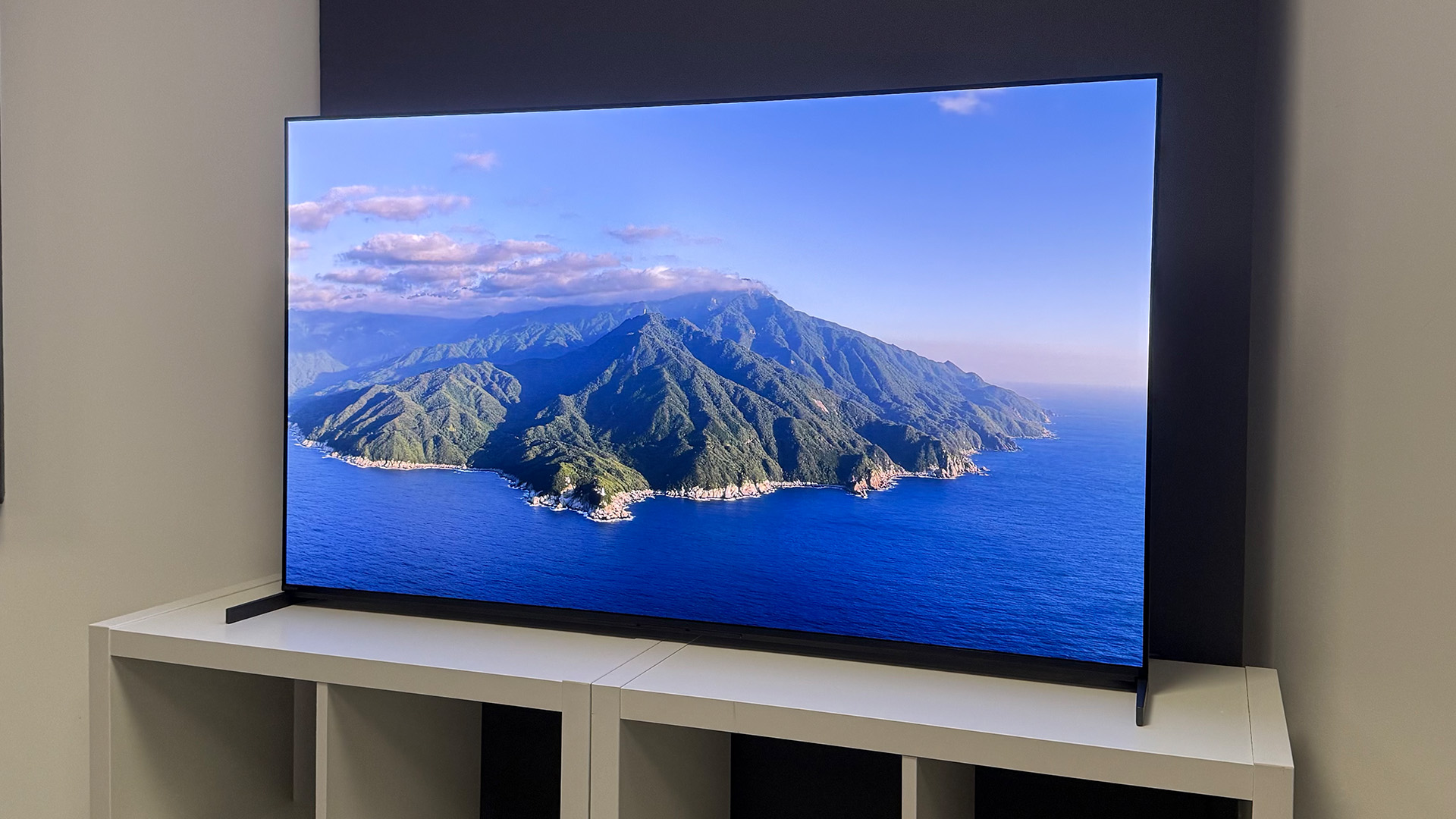What Hi-Fi? Verdict
The Cambridge Alva TT V2 is a great-looking hi-fi turntable that benefits sonically from its solid construction and superior moving-coil cartridge, and in versatility from a good built-in phono stage and the ability to listen via Bluetooth.
Pros
- +
Detailed moving-coil sound
- +
Built-in MC phono stage
- +
Bluetooth out with aptX HD
- +
Great looker
Cons
- -
Fully manual
- -
Not the last word in dynamics
Why you can trust What Hi-Fi?

This review originally appeared in Sound+Image magazine, one of What Hi-Fi?’s Australian sister publications. Click here for more information on Sound+Image, including digital editions and details on how you can subscribe. Read What Hi-Fi?'s global, star-rated Cambridge Audio Alva TT V2 review.
Yes, everyone loves vinyl again, from the Australian Prime Minister to all the kiddies listening to Triple J. We all want a turntable – or if you have one already, you’re probably wondering if you might get a better one.
There’s a funny thing with turntables, though – the higher you go, often the less you get in the way of facilities. Turntables at lower prices can be angled towards convenience, helping out inexperienced vinyl users with automatic operation, easing connections with a built-in phono stage, even adding some extra innovations like USB and Bluetooth.
But at higher prices, manufacturers tend to take all those things off again, because the goal becomes instead sonic purity above all else. Anything which might be a source of noise, or tracking instability, gets the push.
Which makes the Cambridge Audio Alva TT, now fresh and newly upgraded in a version 2 at AU$3699 (UK£1700, US$1999), something of an outlying turntable. It clearly has purity of sound as its main goal, but it retains useful abilities for those wanting something practical,
rather than entirely esoteric.

Build & facilities
There is, for example, a phono stage built into the Alva TT V2, so you can have its output playing straight into a normal line-level input on any amplifier.
It’s a good phono stage too, derived directly from the company’s Duo phono stage, which we’ve previously reviewed separately. It’s a no-nonsense reliable and high-quality phono stage for the price, though not a bells-and-whistles phono stage with multiple loading options. It doesn’t allow anything in the way of cartridge gain matching, no ability to switch between RIAA curves. Inside the Alva TT it just gets on with the job, and will likely outperform at least any phono stage built into a price-comparable amplifier.
But flick the switch next to the rear outputs and you can have the signal back down at phono level, ready for a superior stage, separate or otherwise, either now or as a future upgrade path. That wasn’t possible on the previous Alva turntable.
The latest hi-fi, home cinema and tech news, reviews, buying advice and deals, direct to your inbox.
We should also praise Cambridge for including a high-quality pair of interconnects in the box, not your usual thin freebie wires. There’s also now an earthing cable added for those running at phono level, and an earthing post on the deck, not previously needed on the previous line-level-only Alva TT model.
Of course the big trick with this turntable is that you don’t have to use cables at all. It can output via Bluetooth to any Bluetooth speaker, to a Bluetooth-equipped hi-fi system, or straight to a pair of wireless headphones, and we can tell you that playing vinyl to headphones is a wonderfully liberating experience.
The Bluetooth option also frees up positioning greatly; you can place your turntable wherever you have a level surface available, and then you need only connect a power cable to it.
There is, of course, a quality issue with Bluetooth – cables will undoubtedly deliver better sound, even if your receiving device can match the aptX or aptX HD Bluetooth codecs that Cambridge has included here. The aptX codec tops out at a bit rate of 384kbps, and aptX HD at 576kbps; clearly neither of them can losslessly transmit CD quality (1441kbps), let alone the 24-bit high-res that aptX HD claims, rarely mentioning that it is throwing away more than half the signal lossily to achieve it. There is simply no such thing as lossless high-res Bluetooth (yet), no matter what people may tell you. Hence cables invariably sound better.

What's new in the V2?

Type: Direct drive with static balanced tonearm and detachable headshell
Speeds: 33, 45 rpm
Motor torque: 1.6kg/cm
Quoted wow & flutter: <0.1%
Platter: 305mm-diameter 20mm-thick POM (polyoxymethylene)
Outputs: RCA phono/line (switchable), Bluetooth SBC/aptX/aptX HD
Tonearm: one-piece aluminium
casting, effective length 221.5mm
Cartridge: High output moving coil, elliptical stylus, aluminium cantilever
Output: 2mV @ 1kHz
Tracking force: 2g
Recommended load: 47kΩ
Dimensions (whd): 435 x 139 x 368mm
Weight: 10.9kg
.
Internal phono stage
THD+N: 0.0025% @ 1kHz
RIAA accuracy: ±0.3dB 30Hz-20kHz
Whether you’re using the sockets or the wireless output, the signal originates from the stylus of the cartridge bouncing around in the groove. The supplied cartridge here is a bespoke moving-coil design, this type more sensitive (though lower output) than moving-magnet cartridges.
Cambridge doesn’t say that it is specifically the same as its Alva MC cartridge, which is available separately for something around AU$900, but it certainly looks like it; the stats and the lunar-grey finish match, and it has the same elliptical stylus on the end of an alarmingly long exposed cantilever (which Cambridge says reduces the unwanted resonance and vibration that can occur in a longer cartridge shell).
Another change for this latest version of the Alva TT is a detachable screw-in headshell, which will simplify any swapping out of cartridges compared with bolting screws into tonearm slots, as on the previous deck. We’re pleased to see also a new anti-skating dial to apply force against the inward pull of the groove; this was not thought necessary on the original Alva TT.
The tonearm is a new selection as well – a high-mass, low-resonance design used on both the Alva TT V2 and a less-expensive Cambridge turntable, the Alva ST. Indeed much of the overall design is similar for that AU$1799 ST design, but this premium TT V2 has the moving-coil cartridge over the ST’s moving-magnet, and upgrades the ST’s aluminium platter to a 20mm-thick 2.2kg stone-like platter made from polyoxymethylene, also known as polyformaldehyde, an engineering
thermoplastic designed to minimise resonances in the system.
But the biggest difference between the two turntables is the way the platter is spun to move the groove along beneath the stylus. While the ST turntable uses the belt-drive method most common in hi-fi turntables, the Cambridge team has gone with a medium-torque direct-drive motor for the Alva TT V2, as did its predecessor, the TT.
This direct-drive motor has eight poles, which – along with the heavy platter's inertia – aims to combat cogging (where the rotation slows between the impulses from each pole), while the brushless DC motor is quartz-controlled for accuracy.
Direct drive was traditionally reserved more for DJ decks, as it can spin a disc up to speed faster than belt drive, though direct drive was traditionally considered a noisier, less isolated mechanism with cogging issues. The performance of the Alva TT v2 shows that the differentials have been closed up significantly, if not entirely. We’ve never have picked the Cambridge as direct drive from its sound.

Set-up and sound performance
Unpacking and setting up was easy – screwing in the headshell, adding the arm weight, slotting in the hinges and attaching the smoked cover. No belt to attach here!
We were very impressed by the look of the Alva, especially the 6mm-thick lunar-grey aluminium plate which tops the composite-wrapped MDF plinth, separated by a layer of rubberlike EVA to absorb vibration.
A stylus gauge is included to set the tracking weight to precisely two grams. That done and cables attached (do that first!), we were ready to play. We checked the speed using the RPM iPhone app; this indicated a slight speed deviation at 33.13rpm, and put wow and flutter at 0.18%, rather more than Cambridge’s quoted 0.06%. However, our Sound+Image strobe card indicated no speed deviation whatsoever, and we’re happy to take the opinion of a reliable mechanical device over an iPhone app any day.
The Alva TT V2’s sound took just a little while to warm up, a little flat of emotion and dynamics through an initial four sides of Nick Drake and two of Donovan.
Once either warmed or loosened up, however, the music started flooding out. Prompted by the recent resurrection of Kate Bush via Stranger Things S04, we pulled from the racks one of our three KB ‘Remastered in Vinyl’ box sets, extracted ‘Hounds Of Love’ and sat back to enjoy side one, the ‘singles’ side.

Aside from a slight smoothness and lack of airiness, we’d challenge anyone to guess this was vinyl at all. The gaps between tracks were entirely silent, no vinyl crackle to give away the medium, while the spread of sound was wide and full across our speakers. The bowed strings on the title track, more spiccato than staccato, emerged full and rosiny from their position panned hard left. The sliding fretless bass of Eberhard Weber rolled along with substance and solidity as Fairlight-generated crashes and tinkles punctuated the wide-open landscape of Mother Stands For Comfort. The magnificent Cloudbusting lit up the room and hurled goosebumping bursts of joy all over us.
We just had to flip the LP over for ‘The Ninth Wave’ sequence filling the whole of side two. The cinematic placement of voices on the intro to Waking the Witch is testament to the resolution of the moving-coil cartridge here, as is the tight delivery of this track’s insane vocal splicing, and the contrasting open spaces and tight kick drum of the subsequent Watching You Without Me.
The Alva TT V2 doesn’t overegg the warmth of vinyl, and it keeps the full picture clean and clear as a result. The 1984 debut LP ‘The Sentinal’ by neo-proggers Pallas was not considered a good record of the band’s real sound; they later remixed it, bringing in a far more solid bass component for digital releases. But the original vinyl mix proved well-suited to the Alva when played through its internal phono stage, the bass perhaps more lean Rickenbacker than full Fender, but the lush keyboard layers and Mellotron both well separated into individual components and combined into a glorious whole. A little more surface noise on this LP, but hey, it’s been well-played over nearly 40 years!
The Art Tatum Trio on an Australian 10-inch pressing were nicely propelled along, perhaps a little smoothed of dynamics but with a stable and well-toned piano sound speaking to the Alva’s speed stability. Here the MC cart didn’t really get among the spaces (harder on a mono recording perhaps), and we have heard more spritely delivery of this set from decks at similar prices, from Rega for one, a brand coming to Australia through the same local distributor.
With Mr Tatum appearing on a 10-inch disc, we were pleased the Alva TT is fully manual with no automatic operation. We quite like decks that lift and return the arm at the end of playback (just in case we’ve fallen asleep), but if they also auto-lift and drop at the beginning, then a 10-inch disc can be a disaster.

Wireless vinyl listening
While we spun some Beethoven (his second, and especially the Larghetto), we connected a pair of Bluetooth headphones.
Making this connection was a little trial and error – you’ve got no display to show what’s happening, so you put your headphones in pairing mode and put the turntable in pairing mode then just hope they shake hands somewhere in the middle.
This took three attempts with a pair of shiny new Bowers & Wilkins Px7 S2 ANC wireless headphones, but thereafter we were striding around the home enjoying a little surface noise with our wireless music. This is great fun, and there’s plenty of level available (controlled entirely from your headphones), with plenty of range too – we were 15 paces away in the garden before the drop-outs came (they were rather noisy when they did).
For system playback we’d really suggest wiring up the Alva TT if you can, but we do very much recommend direct-from-disc headphone playback as a marvellous way to relax, especially as von Karajan pushes the Berlin Phil to ever greater heights. (This 1976 German DG re-issue cost $3 at a local record fair, and is immaculate. Score.) The Bluetooth connection may not do the dynamics any favours, but that’s small beer next to the joys of wireless vinyl freedom.
While talking about the convenience factor, praise also for the tapered edge to the platter, which thereby fully supports the disc but allows your fingers to get easily under the LP to remove it.
Verdict
The Cambridge Alva TT V2 is one great-looking deck that benefits sonically from its solid construction and superior moving-coil cartridge, while offering versatility to use or not use its excellent built-in phono stage, or to do away with signal cables and listen via Bluetooth.
That proved a joy for headphone listening, though we’d recommend cabling to a music system to enjoy the very best this deck can offer in all circumstances.

Jez is the Editor of Sound+Image magazine, having inhabited that role since 2006, more or less a lustrum after departing his UK homeland to adopt an additional nationality under the more favourable climes and skies of Australia. Prior to his desertion he was Editor of the UK's Stuff magazine, and before that Editor of What Hi-Fi? magazine, and before that of the erstwhile Audiophile magazine and of Electronics Today International. He makes music as well as enjoying it, is alarmingly wedded to the notion that Led Zeppelin remains the highest point of rock'n'roll yet attained, though remains willing to assess modern pretenders. He lives in a modest shack on Sydney's Northern Beaches with his Canadian wife Deanna, a rescue greyhound called Jewels, and an assortment of changing wildlife under care. If you're seeking his articles by clicking this profile, you'll see far more of them by switching to the Australian version of WHF.

